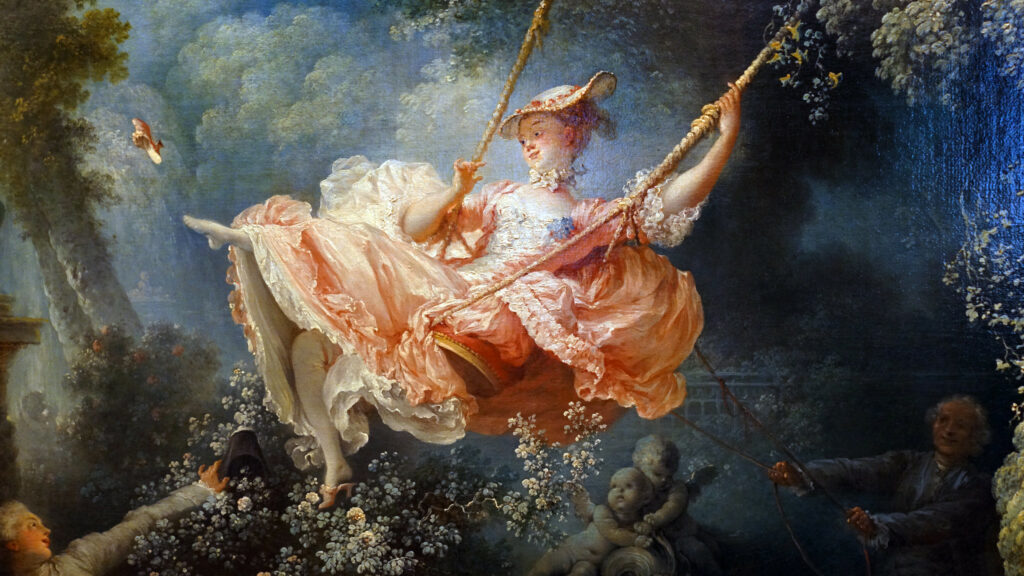If you were to see Jean-Honoré Fragonard‘s L’Escarpolette, or The Swing, at the Wallace Collection, you might not think particularly hard about it. Though all the subtle light effects that make the young woman in pink pop out of the lush garden that surrounds her are impressive, granted — and they’ve become even more so since the painting’s recent restoration — there doesn’t seem to be much else of interest at first glance. But take a second glance, and you may well get a sense of what, back in the seventeen-sixties, made this commission “so raunchy, many artists wouldn’t have done it for all the money in the world.”
So says the narrator of the Art Deco video above, which promises an explanation of why The Swing “isn’t as innocent as it seems.” Take, for example, the young man reclining in the canvas lower-left corner, whose ecstatic expression can perhaps be explained by what’s entered his line of sight. But “forget about the fact that he can see up her skirt: her ankle is showing, a very erotic gesture at the time.”
All of this intensifies when we know the story behind the painting, and specifically that “the man who commissioned the painting is the man in the bush, and he’s also the woman’s lover, not her husband.” Is her husband the older fellow crouched in the opposite corner, clutching the swing’s reins? Perhaps, but like any piece of art worth regarding, this one leaves room for interpretation.
Still, if you understand something of the mores of its time and place, there’s no mistaking its titillating intent. None of Fragonard’s contemporaries could have imagined that this painting would one day hang in a public gallery for all the world to see, commissioned as it was for display only in a private home. Many paintings were in the time of Rococo, “a style of art that comes out of the Baroque,” as art historian Steven Zucker says in the Smarthistory video just above, which despite having “jettisoned the seriousness, the morality” of its predecessor, nevertheless retained “a sense of energy, a sense of movement.” The Swing remains “a perfect expression of the frivolity, the luxury, and the indulgence of the Rococo” — and a reminder, as the Art Deco video puts it, that “whatever happens in the mystical garden, stays in the mystical fairy garden.”

Related content:
The Scandalous Painting That Helped Create Modern Art: An Introduction to Édouard Manet’s Olympia
What Makes Vermeer’s The Milkmaid a Masterpiece?: A Video Introduction
When John Singer Sargent’s “Madame X” Scandalized the Art World in 1884
Why Does This Lady Have a Fly on Her Head?: A Curious Look at a 15th-Century Portrait
Based in Seoul, Colin Marshall writes and broadcasts on cities, language, and culture. His projects include the Substack newsletter Books on Cities, the book The Stateless City: a Walk through 21st-Century Los Angeles and the video series The City in Cinema. Follow him on Twitter at @colinmarshall or on Facebook.
